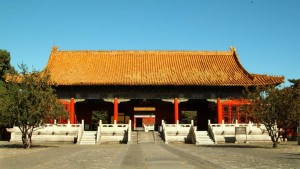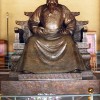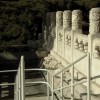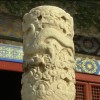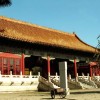- Photos
- The Ming Tombs
The Ming Tombs
TM
Tannistha Mukherjee
Updated
Explain more about the photos or videos like location, time and the specific camera settings you would have used to take these photos. Also, if you would have used any accessories or a smartphone app to take the media you are sharing, you can mention them here.
The Ming Tombs, also known as the Thirteen Tombs of the Ming Dynasty, are a collection of mausoleums located in the Changping District of Beijing, China. These tombs were built during the Ming Dynasty (1368-1644) and served as the final resting place for 13 emperors of the dynasty, along with their consorts, concubines, and other members of the imperial family.
Here are some key points about the Ming Tombs:
Construction: The construction of the Ming Tombs began in 1409 during the reign of the Yongle Emperor and continued for over two centuries until the collapse of the Ming Dynasty. Each tomb was built as an individual complex within a separate valley, reflecting the imperial belief in the harmony between heaven and earth.
Layout: The tombs are situated at the southern foot of the Tianshou Mountain, with the Great Wall of China running along the northern side. The entire area covers a vast expanse of around 40 square kilometers and is surrounded by mountains on three sides, creating a natural protective barrier.
Thirteen Emperors: The tombs house the remains of 13 emperors of the Ming Dynasty, including the famous Yongle Emperor, who moved the capital to Beijing and initiated the construction of the Forbidden City. The most well-known tomb is that of the Wanli Emperor, which is named the Changling Tomb.
Changling Tomb: The Changling Tomb is the largest and best-preserved tomb among the thirteen. It is the final resting place of the Yongle Emperor, Zhu Di, and his Empress Xu. The tomb is renowned for its grandeur and elaborate architectural design.
Sightseeing: Visitors to the Ming Tombs can explore the Sacred Way, a long pathway flanked by statues of mythical creatures and officials. The path leads to the entrance of each tomb. While some tombs remain closed to the public, the Dingling Tomb, the underground palace of the Wanli Emperor, is open for visitors to explore.
UNESCO World Heritage Site: The Ming Tombs, collectively known as the Imperial Tombs of the Ming and Qing Dynasties, were designated as a UNESCO World Heritage Site in 2000. The site is recognized for its historical and cultural significance, representing the imperial burial practices of the Ming Dynasty.
The Ming Tombs offer visitors a glimpse into China's imperial history and the architectural achievements of the Ming Dynasty. It is a popular tourist destination and a valuable cultural heritage site in Beijing.
Here are some key points about the Ming Tombs:
Construction: The construction of the Ming Tombs began in 1409 during the reign of the Yongle Emperor and continued for over two centuries until the collapse of the Ming Dynasty. Each tomb was built as an individual complex within a separate valley, reflecting the imperial belief in the harmony between heaven and earth.
Layout: The tombs are situated at the southern foot of the Tianshou Mountain, with the Great Wall of China running along the northern side. The entire area covers a vast expanse of around 40 square kilometers and is surrounded by mountains on three sides, creating a natural protective barrier.
Thirteen Emperors: The tombs house the remains of 13 emperors of the Ming Dynasty, including the famous Yongle Emperor, who moved the capital to Beijing and initiated the construction of the Forbidden City. The most well-known tomb is that of the Wanli Emperor, which is named the Changling Tomb.
Changling Tomb: The Changling Tomb is the largest and best-preserved tomb among the thirteen. It is the final resting place of the Yongle Emperor, Zhu Di, and his Empress Xu. The tomb is renowned for its grandeur and elaborate architectural design.
Sightseeing: Visitors to the Ming Tombs can explore the Sacred Way, a long pathway flanked by statues of mythical creatures and officials. The path leads to the entrance of each tomb. While some tombs remain closed to the public, the Dingling Tomb, the underground palace of the Wanli Emperor, is open for visitors to explore.
UNESCO World Heritage Site: The Ming Tombs, collectively known as the Imperial Tombs of the Ming and Qing Dynasties, were designated as a UNESCO World Heritage Site in 2000. The site is recognized for its historical and cultural significance, representing the imperial burial practices of the Ming Dynasty.
The Ming Tombs offer visitors a glimpse into China's imperial history and the architectural achievements of the Ming Dynasty. It is a popular tourist destination and a valuable cultural heritage site in Beijing.
Enter the keywords that are relevant to the photos or videos that you will upload with this post.
User reviews
There are no user reviews for this listing.
Already have an account? Log in now or Create an account

